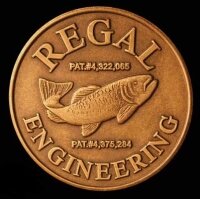Dave was born and raised in Johnstown, Pennsylvania. He is a professional, licensed Pennsylvania guide, wet fly tier, and owner of Wet Fly Waterguides. He has been fly fishing since the early 1970’s, and has concentrated his efforts at the famed waters of Central and North Central Pennsylvania, specifically streams like; Spring Creek, Penn’s Creek, Little Juniata, Kettle Creek, and Big Pine Creek. Dave specializes in the classic art of wet fly fishing. His mission is to educate new and seasoned fly fishermen about the largely forgotten art of wet fly fishing, and to show exactly how productive wet flies can be throughout the year. Over the past 30 years, Dave has spent countless hours on the stream and at the vice, perfecting and designing highly effective wet fly patterns and customized wet fly leaders. His unique guide service is one of a very few in the country that focuses on fishing with wet flies throughout the year. Dave takes great pride in teaching his clients that this lost art of fly fishing is as effective today as in the past. He has given numerous seminars and demonstrations on wet fly fishing to local TU chapters, FFF clubs, Boy Scout troops, H.S. fly fishing clubs, and fly fishing shows.
Slate Drake
Dave explains a great summer fly, the Slate Drake.
As most of the more famous hatches are gone for the season and a lot of fly fishermen are hanging there boots up for the year, there is still one really good fly that will produce some good results throughout the summer, that fly being the slate drake. These flies start to make an appearance around the third week of June and continuing to be present into the dog days of summer. Most of the hatching activity occurring during the summer months seems to take place in the morning and evening hours. One of the nice things about fishing this hatch is that it will again show up in the fall and the flies will hatch throughout mid day. Maybe not in good numbers as you see it in summer, but there will be enough of flies hatching to get the fish interested and start feeding on them.
The way that I fish this hatch is I use three different patterns of the the slate drake at one time. I use an intermediate sinking fly line and a nine foot leader built to fish three flies, just like they used back in the day. This will let me cover all three stages of the flies life cycle. The point fly will be a slate drake wet to imitate the nymph stage. Next will be the first dropper fly and that will be the slate drake wet dun. Then on the second dropper will be a slate drake wet spinner.
I present the flies using a quarter and down stream cast then mending the line up stream to get that drag free drift. Then HOLD ON. The grab will usually come in that first two to four feet of the drift and it will be fast and hard. Fishing quarter and down is a very relaxing way to fish these flies or any wet flies and it lets you cover every inch of the water. Also fishing with three flies gives you a great opportunity of hooking two or three fish at one time. And that’s a wild experience in it self.
Hook: 1xl Nymph Hook
Thread: Olive Dun 8/0
Tail: Medium Dun Hen
Rib: Lt Olive 3/0 Monocord
Body: Callibaetis (Wapsi Super Fine)
Thorax: Same as body
Hackle: Medium Dun Hen
Wing: Dark Dun Mallard Secondary Wing Feather
Hook: 1xl Nymph Hook
Thread: Coachman Brown 8/0
Tail: Medium Dun Hen
Rib: Lt Gray 3/0 Monocord
Body: Rusty Brown (Wapsi Squirrel Dub)
Thorax: Same as body
Hackle: Medium Dun Hen
Wing: White Antron
Hook: 1xl Nymph Hook
Thread: Wine 8/0
Tail: Dark Mollted Brown Hen
Rib: Wine (Fine Uni-Wire)
Stripe over Back: Dental Floss
Body: Pheasant Tail (Claret in color)
Thorax: Wine Colored Dubbing
Hackle: Dark Brown Mollted Hen



















Does Dave tie the slate drake in different sizes, attempting to imitate several late-season hatches?. Otherwise, I’d assume the ‘slate drake’ term applies to the isonychia species, and tie them in sizes 8-12, as we know them here in New England. Thank you!
Al
That fly is used to imitate the isonychia here in Pa. I have tied them smaller but I am still using it for that specific hatch.
Dave
Fishing wets with a drag free drift is a dynamite approach. Why not use a reach cast? I am astonished at the number of “fly fisherman,” that are not familiar with this cast.
Pat Damico, IFFF, MCI